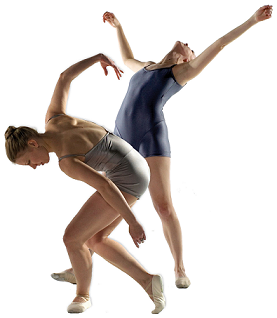I’m backed up on all fronts, so this will be relatively short, but I was compelled to write some comments on Boston Ballet’s All Kylián which I caught last Sunday. By now Kylián’s genius is so apparent that it hardly needs to be even mentioned, and so the attention shifts to Boston Ballet’s execution. I’ve purposely avoided seeing some of their recent Kylián performances due to my palpable disappointment in their lack of understanding when I saw them perform his work a few seasons ago, but I thought I would give them another try since by now they’ve had a few more Kylián programmes under their belt.
Unfortunately, it doesn’t appear that Boston Ballet’s mastery of Kylián has grown at all. The most egregious illustration of this was in the first work on the programme, Wings of Wax (1997). The work is perhaps more virtuosic than usual, and is full of grand jetés, arabesques, and rapid synchronized turns with the arms in the fourth position. It’s also quintessentially Kylián, and the quote from the reviewer at the Netherlands newspaper NRC Handelsblad that is included in the documentary on the choreographer is particularly apt: “Kylian creates magic through movement – it is never predictable, never forced and yet it is almost impossible keep track of what is going on”. Kylián’s ability to pack a single work full of surprises yet still be completely cohesive continues to astonish (this is a work that I would be happy to watch on repeat for months on end), and his well of creativity seems limitless. Perhaps this density causes difficulty for the dancers, because although I don’t doubt that the choreography was executed accurately, there was a distinct lack of emotion throughout. The performance was hampered by a hyper-emphasis on athleticism, and although movements were executed with aplomb, they lacked the attention to detail Kylián’s works demand: each movement must have a trajectory, with a distinct beginning (origin), continuation (progression), and ending (conclusion). I would argue that the main emotions behind virtually all of Kylián’s works are those of melancholy and longing, none of which were apparent in this performance. I rarely felt any intention behind any of the dancers’ movements: is that rapid leg movement meant to be a flutter, a shimmer, a quiver, a spasm? This constant lack of communication gave an overall effect like that of So You Think You Can Dance? and other TV dance competitions, as incongruous as a Broadway singer belting out a Schubert lied, and equally unsatisfying. Of the dancers Whitney Jensen’s cool and controlled performance was the most in-line with Kylián’s aesthetic, although Lia Cirio’s intensity was an almost-acceptable substitute.
The second work Tar and Feathers (2006) is also quintessentially Kylián, although more recent, more contemplative, and more experimental. The work features samples of a dog snarling (at times synchronized with a dancer miming the sound), improvised piano, and bubble wrap. The work is much more foolproof than Wings of Wax in that much of it consists of slow transitions from one pose to another, so worked better for the Ballet overall. Despite inventive movement and some interesting trio choreography (such as a male lifting up a female who simultaneously lifts up another female), the work feels less cohesive than Kylián’s other works: the bubble wrap isn’t explored enough to become fully integrated into the work, (cf. the green apples in Sweet Dreams from 1990), and the staging of the Beckett poem, which has five dancers with bright red lips and tutus made of bubble wrap miming in a pseudo-sign language, was rather too obvious (much like the Lightfoot/León’s “Shutters Shut”, set to the Gertrude Stein poem “If I told him” from the NDT2 performance from a few years ago), as was the ending, in which a dancer tiptoes off stage to the amplified sounds of bubble wrap popping underneath her feet.
The final work, Symphony of Psalms, dates from 1978 and is one of Kylián’s earlier works, and one of the first he created after becoming Artistic Director of Nederlands Dans Theater. From his note on the work from his official site (which incidentally was unveiled at the very end of last year and which is a treasure trove for any Kylián fan) it seems he has a personal affection for the piece, but as a work it does feel more like a preview of the greatness that is to come as opposed to being fully satisfying in its own right. No doubt the work was included because it plays to the company’s core strengths (i.e. classical ballet) more than the other, more-modern works, but the work has a formalism that toes the line between “classical elegance” and stiffness, most apparent in the handling of the eight couples as they move across the stage. Symphony of Psalms is interesting as an early work and in the hands of a truly capable group could prove to be more worthwhile, but the Ballet’s combination of soloists, principals, and corps de ballet members felt incohesive and even core movements, such as when the women move forward with knees bent, heads down, and palms stretched forward, felt mechanical and disengaged.
While I applaud any efforts to bring Kylián to a larger audience, when the end result is as mixed as Boston Ballet’s it becomes impossible to support them without deep reservations. I’m happy at the thought of audiences becoming introduced to Kylián for the first time. However, for myself, although I’ve been content to rely on videos of Kylián’s works as opposed to seeing performances live locally, I think I’m going to have to make more of an effort to plan my vacations around seeing his works done further afield by groups with a deeper understanding than Boston Ballet’s.











